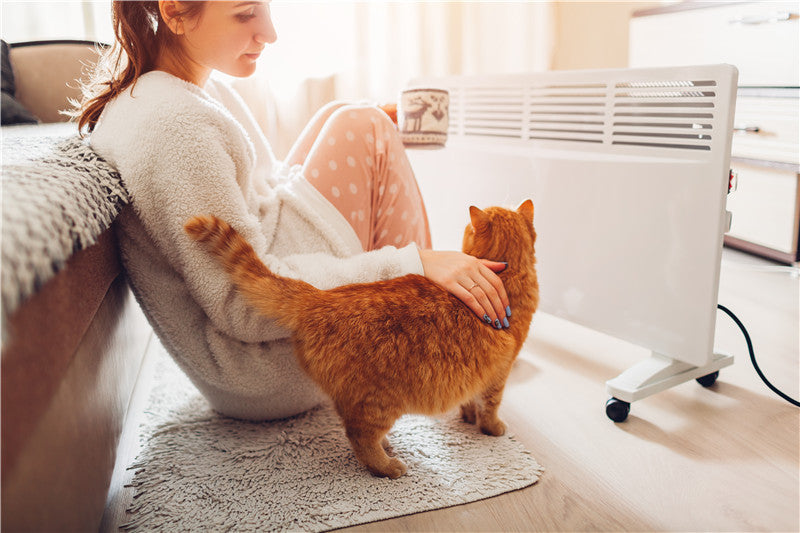Do you have a cat in your home? If so, you may be wondering what to do when it goes into heat. This can be an overwhelming time for both the cat and the owner! As a pet owner, you should be aware of the signs and symptoms of cats in heat so you can provide them with the necessary care. Both female and male cats can go into heat, and it's important to be aware of the signs so that you can take the appropriate steps. We will discuss the signs and age that a cat is in heat, what behaviors to expect, and what you should do when confronted with this situation.
How often cats are in heat and at what age?
The female cat reaches sexual maturity at around four months of age and can breed. Then, every year, around February to October, they will enter their heat season. During this period, female cats will have many short periods, roughly 2-3 weeks apart.
Since they do not ovulate until they have mated, this heat cycle can last a long time. Even spayed older queens (female cats) can have fewer cycles than unspayed ones. In March, April, and May, longer days can stimulate reproductive activity and result in many kittens. Cats don't go through menopause, so heats continue even when they reach a certain age. Seasonal breeding cats can produce a litter at any time of the year, even though springtime is often considered to be "kitten season."
It is usually between September and March that male cats go through their critical heat season. A tom (male cat) who has reached full maturity (typically 6-12 months) can mate with a female cat whenever she permits him to do so. Cats that are outdoors are more likely to mature quickly, especially if they're surrounded by intact males.

Here are some symptoms and behaviors to look out for if your cat is in heat:
Although each cat is different, when it is in heat, its behavior is generally the same. Cats, like us, are prone to mood swings and tend to bloat. Cats, however, display physical signs of their moods. Even if you've never seen a cat in heat before, you're highly likely to recognize your pet's behaviors when she's in heat - the displays she uses to attract a mate will certainly attract your attention as well. In addition to these signs of pain or distress, cats in heat may show the following signs and behavior:
- Your cat will become very attached, constantly rubbing up against you, other animals in the home, or even furniture.
- Females are flirty and more affectionate than males, with back-arching, rubbing, and rolling on the floor.As a result, her head may drop low while her hindquarters rise high when you stroke her or pet her.
- When in heat, male cats are more attention-seeking and can be pushy and demanding.Moving the tail from side to side.
- When they're in heat, cats can also roam further away from the house. Various behaviors can include clawing at window screens or running out the door when it opens.
- The vocalizations of female cats are usually louder, including loud yowls that are designed to gain the attention of a mate.
- Female cats may spray a fine stream of urine around your home as they mark their territory in an attempt to entice a mate.
- When male cats get into heat, they spray more urine and fight more frequently.
- Meowing sounds are different from cats in heat. It is loud yowling or screaming as if it were in pain. Male and female cats call out to each other very loudly.
- When they are in heat, cats can lose their appetite for food completely.
Unlike humans, a cat's reproductive cycle doesn't occur at regular intervals. An outdoor cat's cycle is tied to nature, such as when the sun is out for about ten hours. Indoor cats, however, come into heat at any time. It is typical for your cat to go into heat between a week and 10 days during this phase, but if she isn't able to become pregnant, she may go into heat again within the next three weeks.
How to handle cats in Heat?
If you have a male and female cat in your home, you will need to take steps to prevent them from mating. One way to do this is to keep them separated when you're not home. You can also put them in different parts of the house or use a pet gate to block off access to certain areas. A male cat's roaming behaviors are much more normal than those of a female cat in heat. It is common for him to roam search the house looking for a mate and occasionally urinate on things out of dominance or respond sexually to the sight of another animal-too close by. The key to combating this problem is to address how you can help your pet redirect their energy elsewhere outside like playtime, cuddling, etc also leaving litter boxes available in various places around the house should give them other options that don't involve urinating all over your things. When your cat is in heat, she will be howling, screeching, and trying to get outside to find a male cat. Make your cat comfortable and distract her. You can give her a nest to sit in or isolate your cat from other male cats to calm her down. You can also play with her to calm her down.
What is the best way to prevent a cat from going into heat?
As far as we know, there is no cat in heat remedy. The sequence cannot be ended with pills, supplements, or herbal treatments. You can only end your cat's heat cycle by either mating, neutering, or spaying. Veterinary professionals recommend not spaying cats in heat, rather advising you to wait out the cycle.

